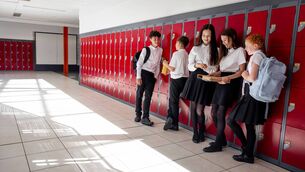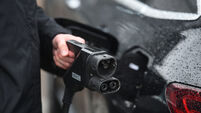Priceless cave-art at Chauvet
Thirty thousand years old, they are the world’s first field-guide. A picture, they say, is worth a thousand words; those which Palaeolithic artists have left us are priceless. They show us creatures gone for ever and tell us things about them we would never otherwise have known.
Herzog is famous for films such as Fitzcarraldo and The Enigma of Caspar Hauser. If, however, you happen to be a philistine who regards most ‘art-house’ offerings as pretentious twaddle, don’t be discouraged. Herzog is a superb documentary maker and this film is uncomplicated and straightforward. It’s also unusual in being shot in 3-D.
The Ardèche rises on a limestone plateau south of Le Puy and flows into the Rhône north of Avignon. The famous gorge which bears the river’s name is the largest canyon in Europe, a magnificent sight. In December 1994 caving enthusiasts Christian Hillaire, Eliette Brunel-Deschamps and Jean-Marie Chauvet, noticed a flow of air coming from fissures inside a small cave near the former bed of the river. Digging a passage, they found a network of caverns about 400 metres long. Bones there turned out to be those of bears and wolves. Just as they were about to leave, Brunel noticed a red-ochre drawing on a spur hanging from the roof. A scan of the walls revealed more paintings and drawings. The cave, called after Chauvet who reported the find, turned out to be one of the most important ancient art sites ever discovered.
The limestone region of southern France is famous for prehistoric cave-art. Lascaux in the Dordogne and Peche-Merle in the Lot near Cahors are the most celebrated examples. The oldest paintings at Lascaux are thought to be 17,000 years old. Some of the Peche-Merle ones may be 6,000 years older. Radio carbon dating suggests that the Chauvet pictures were created between 27,000 and 32,000 years ago, making these images, from the dawn of Western Art, the oldest in the world. Horses, deer, rhinos, hyenas and owls are among the species depicted. The only humans to feature in them are a sculptural Sheila-na-gigs and some hand impressions. Footprints are preserved on the floor.
Back then, the south of France resembled modern-day Greenland; massive ice-sheets encroached on tundra. Our ancestors, recent blow-ins from Africa, eked out a precarious existence beside those true Europeans, the Neanderthals. Nobody knows why but, by the light of torches, our ancestors created images on the walls of caves deep underground. Nor have archaeologists any idea what purpose these depictions served. Herzog’s documentary doesn’t address such questions.
Woolly mammoths, which were hunted by humans, are much represented in the murals. Another extinct creature, the cave lion, has intrigued zoologists. Did the males have manes? Fossils can’t offer an answer to this question; soft tissue is seldom preserved. At Chauvet a pair of lions is shown in profile with the smaller female in front of her mate. Significantly, he has no mane; a naturalist who lived 30,000 years ago has contributed to 21st century science! Some of the depictions are extraordinarily realistic; Renaissance painters seldom caught the personalities of wild creatures as well as these Palaeolithic craftsmen did.
I used to think that 3-D filming was a mere fairground gimmick, but Herzog uses it to excellent effect. A film shot almost entirely inside a cave might prove claustrophobic to viewers, but the addition of depth to the experience avoids that. The ancient cave artists used the contours of rock and wall to give plasticity to their images; some are virtual bas reliefs. Seen in 3-D, the effect is stunning.
Old paintings are vulnerable to gases from human breath, so Chauvet Cave will be permanently closed to visitors. Tourists are welcome at Peche Merle but numbers there are controlled and visits must be booked in advance. At Lascaux, a plaster-cast replica of part of the cave has been created. On a visit some years ago, I found the facsimile most convincing. Hopefully, the French authorities will adopt a similar approach at Chauvet. Seeing Herzog’s 3-D film, however, must surely be ‘the next best thing’.
* For information on locations mentioned, visit www.franceguide.com.














